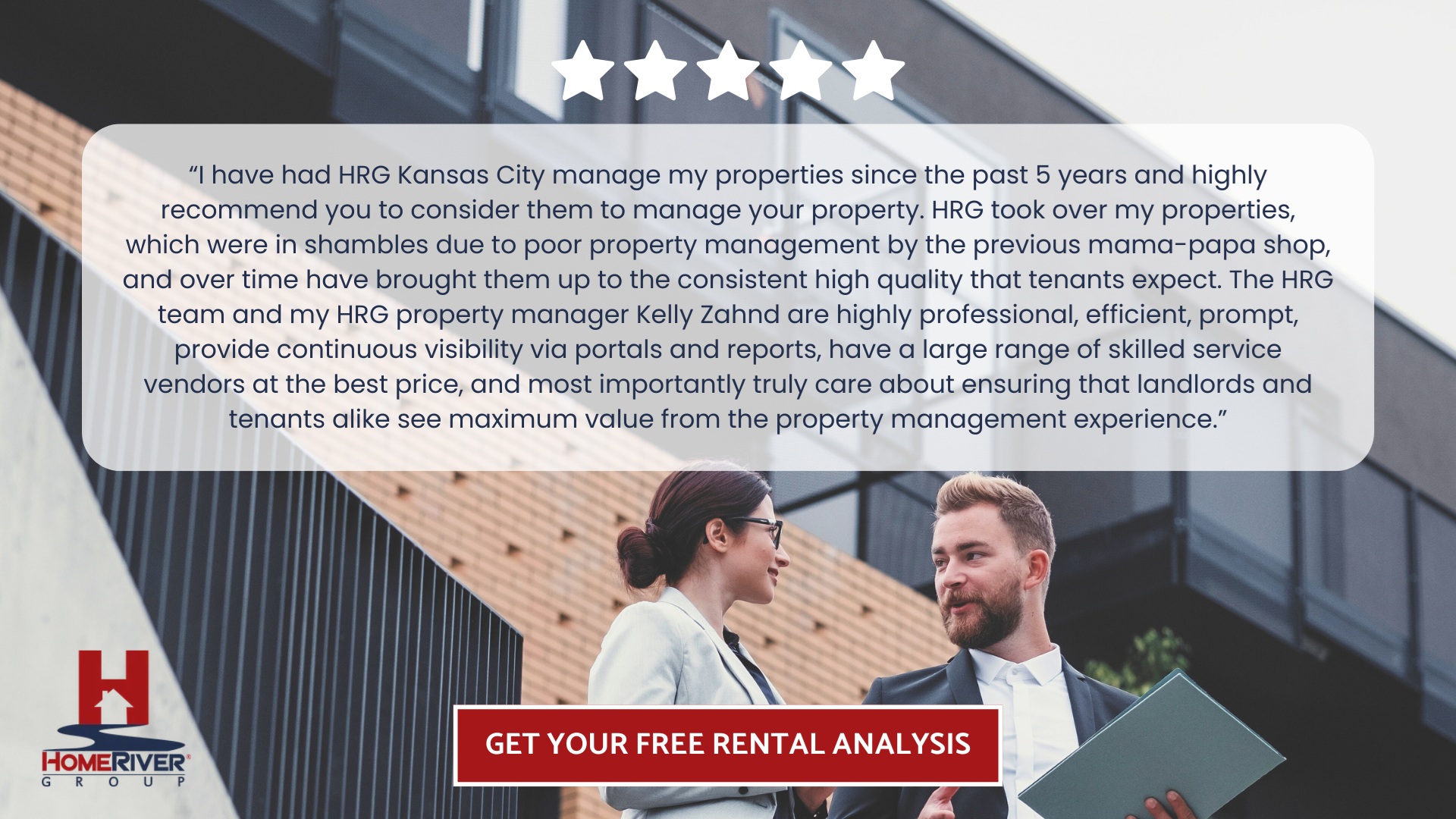
At HomeRiver Group, we bring clarity and confidence to property investing. Our team combines local insight with national scale to help landlords thrive. Whether you're managing one unit or an entire portfolio, we provide the tools, strategy, and support to grow your rental income and safeguard your assets. From leasing to long-term planning, we don’t just manage properties—we maximize potential.
Every successful rental starts with a strong foundation—a smart, strategic plan. Building a rental property business plan is non-negotiable if you’re serious about growing your investment. From setting financial goals to understanding market conditions, your blueprint should guide every decision. It’s not about guessing—it’s about positioning your property to perform, even in a competitive market.
This blog will explore how to create a comprehensive rental property business plan—from defining your goals and understanding your target market to mapping out financial projections, legal obligations, and long-term growth strategies.
Developing A Strategic Plan For Your Rental Property
A successful rental property business plan hinges on a clear, actionable strategy.
Start by focusing on your rental property's market position—what makes your offering stand out? Whether it's location, amenities, or a unique tenant experience, define your property's strengths and how they align with local demand.
Next, conduct a thorough market analysis. Identify your target tenant demographic and assess current market trends in rental rates, occupancy, and competing properties. Use this data to fine-tune your pricing, forecast vacancy rates, and set realistic revenue expectations. If you’re investing regionally, understanding the best areas to invest in Phoenix or other target cities can provide a competitive edge in acquisition and rental strategies.
Outline your operational approach in detail. This should include processes for maintenance, tenant communication, rent collection, and vacancy management. Consider what tools or systems will streamline these operations, keeping your property running smoothly and minimizing costly downtime.
Financial planning is the engine that drives your strategy forward. Lay out projected income and expenses alongside contingency plans for unforeseen costs. A compelling rental property business plan anticipates market shifts and includes strategies for maximizing returns even during fluctuating economic conditions.
Finally, establish key performance indicators (KPIs) tailored to your property goals. Regularly track metrics like occupancy rates, tenant retention, and net operating income. Reviewing these KPIs helps you adapt quickly, ensuring your strategy evolves alongside market demands and keeps your rental property performing at its best.
Financial Planning And Budgeting
A well-crafted rental property business plan hinges on sharp financial planning and meticulous budgeting.
Identify All Expenses: Start by itemizing every expense associated with your rental—from mortgage payments and property taxes to insurance, maintenance, and HOA fees. Underestimate nothing; unexpected costs can quickly erode your margins.
Forecast Rental Income Realistically: Forecast your rental income with a realistic lens. Dig into comparable properties in your market to set a competitive rent while avoiding vacancies. Factor in seasonality, local demand fluctuations, and market trends.
Plan For Capital Expenditures: Plan your capital expenditures, too. Significant upgrades and renovations—roof replacements, HVAC systems, or landscaping overhauls—require a long-term view and disciplined saving. Budget for these in advance rather than scrambling when repairs crop up.
Evaluate Cash Flow Projections: Scrutinize your cash flow projections. A successful rental property business plan doesn’t just survive month to month—it thrives on reliable net income.
Build A Reserve Fund: Incorporate a reserve fund in your budget to safeguard against vacancies or emergency repairs. This cushion is the backbone of sustainable property ownership, allowing you to navigate uncertainties while keeping your investment strong.
Marketing Strategies For Your Rental Property
Getting your rental property noticed in a crowded market takes more than just a “For Rent” sign on the front lawn. To attract quality tenants and reduce vacancy time, you need a dynamic, multi-channel marketing approach that targets your ideal audience where they’re most active.
Here’s how to sharpen your marketing game:
Establish Your Ideal Tenant Profile
Before launching your campaign, define exactly who you want to reach. Are you targeting young professionals, families, or students? Knowing the demographics and preferences of your ideal tenants lets you tailor your messaging—everything from the photos you choose to the channels you use.
Invest In High-Quality Visuals
Professional photos and virtual tours are non-negotiable. Showcasing your property’s best features with crisp, well-lit images helps it stand out in digital listings. Consider investing in a 3D walkthrough to give prospects a sense of the space before they step inside.
Harness Digital Platforms
List your property on major rental websites such as Zillow, Trulia, and Apartments.com, as well as local classifieds. Don’t overlook social media: targeted ads on Facebook and Instagram can push your listing in front of highly relevant users based on location, interests, and other factors.
Leverage Local Networks
Offline marketing remains powerful. Connect with local real estate agents, post in community forums, and consider partnerships with nearby businesses or universities if your target audience aligns. Eye-catching flyers in key spots—coffee shops, gyms, neighborhood boards—can also drive interest.
Optimize Your Listing Content
Every word matters. Write compelling descriptions that highlight your property's unique features (think: newly remodeled kitchen, pet-friendly policy, or proximity to transit) and lifestyle. Be transparent and detailed; clear, accurate information attracts serious inquiries.
Track And Adjust
Marketing isn’t set-and-forget. Monitor which channels bring in the most qualified leads and adjust your strategy accordingly. A data-driven approach helps you allocate time and resources where they have the greatest impact, ensuring your property doesn’t sit vacant longer than necessary.
Building A Team: Hiring Property Managers And Staff
A successful rental property business plan isn’t just about numbers and spreadsheets—it’s about people.
Recognizing The Value Of Your Team
Hiring the right property managers and support staff is crucial to transforming your investment goals into everyday operational success. Whether scaling up a portfolio or diving into your first property, building a skilled and committed team should be a central part of your strategy.
Identifying The Roles You Need
Start by outlining the specific roles your business needs. A property manager will be your boots on the ground, handling tenant communications, rent collection, and maintenance coordination. But don’t stop there. Depending on the scale, you might also need leasing agents, maintenance technicians, accountants, and marketing specialists. Think about the day-to-day realities of property operations—each role you fill is a safeguard against vacancy, late payments, and costly mistakes. Understanding market-specific considerations, such as property management fees in California, can also help you plan your staffing and budgeting more accurately.
Hiring The Right People
Once you know what you need, craft detailed job descriptions focusing on experience, local market knowledge, and a customer-first mindset. Prioritize candidates who demonstrate clear communication skills, organizational prowess, and a knack for problem-solving. The property business is unpredictable; your team should be proactive, adaptable, and dedicated to preserving the value of your rentals.
Investing In Training And Culture
Training and culture matter just as much as experience. Invest in onboarding and continued professional development to keep your staff engaged and current on the latest industry practices. A cohesive, well-trained team doesn’t just keep tenants happy—it adds value to your portfolio and gives you peace of mind.
Maintaining Accountability And Performance
Incorporate clear performance metrics and regular check-ins to support accountability and continuous improvement. A winning rental property business plan is only as strong as the team executing it. Make your hiring process a priority, and you’ll reap the rewards.
Measuring Success: Key Performance Indicators
Building a comprehensive rental property business plan is only effective if you have clear methods for tracking its success. Identifying and monitoring Key Performance Indicators (KPIs) becomes essential. KPIs are the pulse of your rental property business—they don’t just keep you accountable but spotlight improvement areas and celebrate your wins.
Here are some of the most impactful KPIs to track:
Occupancy Rate
This KPI tells you what percentage of your units are currently leased. A high occupancy rate is typically a positive sign, but it should be balanced against rent levels—filling units too quickly at below-market rates may be a red flag.
Net Operating Income (NOI)
NOI is the ultimate snapshot of your profitability. It’s calculated by subtracting operating expenses from your total rental income. Reviewing your NOI helps you stay agile and quickly identify expense creep or revenue dips.
Tenant Turnover Rate
Keeping turnover low saves both time and money. Every time a tenant leaves, you incur costs—lost rent, cleaning, advertising, and repairs. Measuring turnover rate can help you assess the effectiveness of your tenant relations and property management.
Rent Collection Rate
It’s not enough to have leases signed; you need timely rent payments. Tracking the rent collection rate—how much is collected versus what’s owed—can expose problem areas or signal when it’s time to revisit your tenant screening process.
Maintenance Response Time
Addressing repair requests promptly leads to happier tenants and longer leases. Monitor average maintenance response and resolution times to ensure service standards are met and identify process bottlenecks.
Remember to also consider metrics like determining a good cap rate—a reliable indicator of your property's return on investment compared to market performance. Understanding what qualifies as a strong cap rate in your area can help guide acquisition and pricing strategies.
Final Thoughts
A robust rental property business plan sets a clear, actionable roadmap for your future success. At HomeRiver Group, we understand that each investor’s journey is unique. However, the principles of effective planning apply universally: define your goals, know your market, and set a realistic financial framework. Equipped with a well-crafted business plan, you can make informed decisions and adapt as the market shifts, minimizing risk and maximizing your investment potential.
When you partner with HomeRiver Group, you gain access to a nationwide network backed by local insight and industry-leading tools. Our proven systems for asset management, centralized reporting, and dedicated support are your competitive advantage, transforming a strong business plan into real-world results.
At HomeRiver Group, your property truly is our priority. Let’s pave the way for your success—starting with the right plan, executed with the right partner.
Read also:
Rental Property Inspection Checklist: What To Review Before And After Tenants
Rental Property Insurance Cost: What To Expect And How To Save
Frequently Asked Questions About Rental Property Business Plan
What kind of market analysis should I include in my business plan?
Market analysis should cover both local and macroeconomic trends. Focus on neighborhood demographics, average rental rates, vacancy rates, population growth, job market trends, and future development plans in your area. As a national property management company with local expertise, HomeRiver Group recommends using accurate, up-to-date data to assess how your property will perform in current and future market conditions. Include competitor analysis—understand who else is renting similar properties and what makes yours stand out.
How do I assess the rental demand in my target area?
Begin by researching local rental listings and occupancy rates—these numbers indicate if there’s a high demand for property like yours. Check economic indicators, such as recent job growth or new businesses moving in, and talk to local property managers, including our teams at HomeRiver Group, to gauge day-to-day demand. Lastly, trends in population growth and housing development projects should be studied to understand long-term viability.
How can I define my rental property business objectives?
Define your objectives by clarifying your vision, short-term, and long-term. Objectives might include target occupancy rates, income goals, the number of units acquired, or levels of tenant satisfaction. Make each objective specific, measurable, achievable, relevant, and time-bound (SMART). For example, aim to achieve a 95% occupancy rate within your first year, or boost your positive tenant reviews by 25% in two years.
How do I determine the target market for my rental property?
Analyze your local market demographics to define your ideal tenant—families, young professionals, students, or retirees. Consider the features of your property and neighborhood: Is it close to schools, public transportation, or business districts? This helps shape your unit pricing, marketing, and amenities to meet their needs.
How do I project the financial performance of my rental property?
Begin by estimating rental income based on market rates and expected occupancy. Subtract expenses—property management fees, taxes, insurance, maintenance, and vacancies—to estimate your net operating income (NOI). Include cash flow projections, break-even analysis, and potential returns on investment. Our team at HomeRiver Group utilizes national resources and local data to help you build accurate, realistic financial forecasts.
What should be included in the executive summary of my rental property business plan?
Your executive summary should provide a snapshot of the plan: outline your rental property vision, define your business goals, summarize market opportunities, highlight the property’s strengths, and briefly overview your financial projections. This section should be compelling, capturing the essence of your plan and enticing stakeholders to read further. At HomeRiver Group, we know a strong executive summary sets the tone for your entire business strategy.











